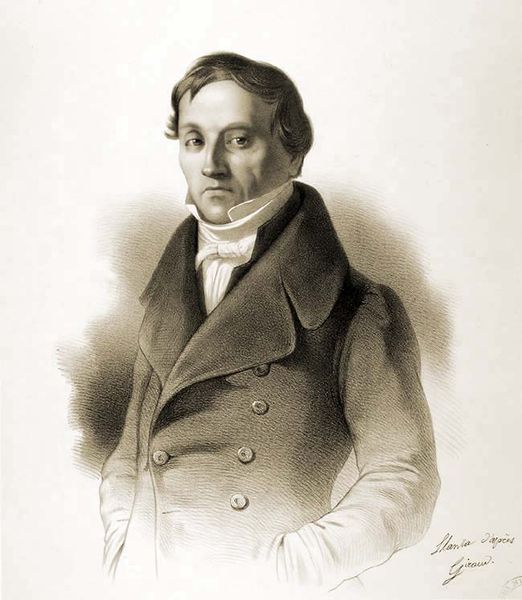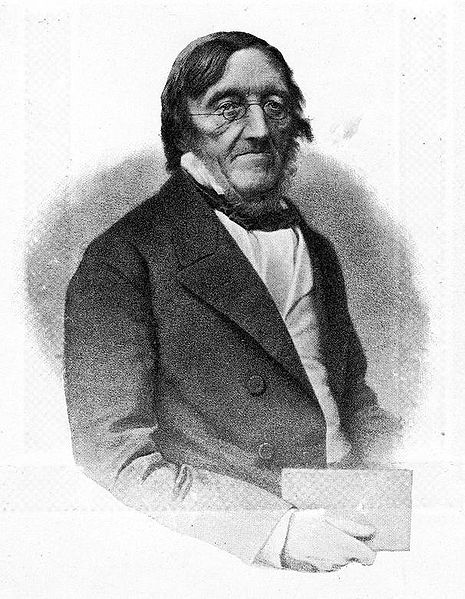<Back to Index>
- Embryologist Karl Ernst von Baer, 1792
- Sculptor William Zorach, 1887
- Field Marshal Alfred von Schlieffen, 1833
PAGE SPONSOR




Karl Ernst von Baer (Russian: Карл Эрнст фон Бэр) also known in Russia as Karl Maksimovich Baer (Russian: Карл Макси́мович Бэр, 28 February [O.S. 17 February] 1792 Piibe, Estonia – 28 November [O.S. 16 November] 1876 Tartu, Estonia) was a Baltic German naturalist of Russian Empire, a biologist, geologist, meteorologist, geographer, a founding father of embryology, explorer of European Russia and Scandinavia, a member of the Russian Academy of Sciences, a co-founder of the Russian Geographical Society and the first President of the Russian Entomological Society.
Karl Ernst von Baer was born in Piibe manor (German: Piep), now in Rakke, Lääne-Viru, Estonia (at the time Governorate of Estonia, Russian Empire); many of his ancestors had come from Westphalia. A knight by birthright, his full name was Karl Ernst Ritter von Baer, Edler von Huthorn. He was educated at the Cathedral School in Reval (Tallinn) and the University of Dorpat (Tartu), each of which he found lacking in quality education. In 1812, during his tenure at Dorpat University, he was sent to Tallinn to aid the city after Napoleon's armies had ravaged it. As he attempted to help the sick and wounded, he realized that his education at Dorpat had been inadequate, and upon his graduation he notified his father that he would need to go abroad to "finish" his education. In his autobiography his discontent with his education at Dorpat inspired him to write a lengthy appraisal of education in general, a summary that dominated the content of the book. After leaving Tartu, he continued his education in Berlin, Vienna, and Würzburg where Döllinger introduced him to the new field of embryology.
In 1817, he became a professor at Königsberg University (Kaliningrad) and full professor of zoology in 1821, and of anatomy in 1826. In 1829 he taught briefly in St Petersburg, but returned to Königsberg. In 1834 Baer moved back to St Petersburg and joined the St Petersburg Academy of Sciences, first in zoology (1834 – 46) and then in comparative anatomy and physiology (1846 – 62). His interests while there were anatomy, ichthyology, ethnography, anthropology and geography. While embryology had kept his attention in Kaliningrad, when in Russia von Baer engaged in a large deal of field research, including the exploration of the island Novaya Zemlya. The last years of his life (1867 – 76) were spent in Dorpat (Tartu), where he became one of the leading critics of the theories of Charles Darwin.
He was elected a foreign member of the Royal Swedish Academy of Sciences in 1850. He was the president of the Estonian Naturalists' Society in 1869 – 1876. A statue honouring him can be found on Toome Hill (Toomemägi) in Tartu. The two kroons (2 krooni) Estonian banknote bears his portrait.
He studied the embryonal development of animals, discovering the blastula stage of development and the notochord. Together with Heinz Christian Pander and based on the work by Caspar Friedrich Wolff he described the germ layer theory
of development (ectoderm, mesoderm, and endoderm) as a principle in a
variety of species laying the foundation for comparative embryology in
the book Über Entwickelungsgeschichte der Thiere (1828). In 1826 Baer discovered the mammalian ovum.
The first human ovum was described by Allen in 1928. In 1827 he
completed research "Ovi Mammalium et Hominis genesi" for
Saint-Petersburg's Academy of Science (published at Leipzig) and established that mammals develop from eggs.
He formulated what would later be called Baer's laws of embryology:
- General characteristics of the group to which an embryo belongs develop before special characteristics.
- General structural relations are likewise formed before the most specific appear.
- The form of any given embryo does not converge upon other definite forms but, on the contrary, separates itself from them.
- Fundamentally, the embryo of a higher animal form never resembles the adult of another animal form, such as one less evolved, but only its embryo.